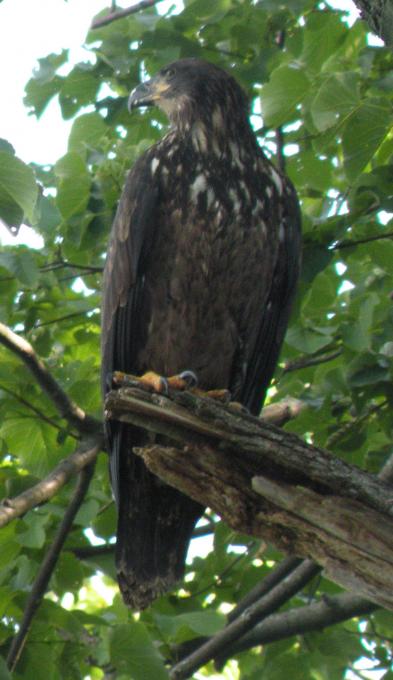The Cornell Lab Bird Academy › Discussion Groups › Bird Identification › [Help me learn] Bald Eagle?
-
Hi all, I took this photo of a large raptor, and didn't know what it was. Someone told me it's a juvenile Bald Eagle. Could anyone tell me what ID features I should be using to know that it's a Bald Eagle? Thanks!
 You must be logged in to reply to this topic.
You must be logged in to reply to this topic. -
It is a bald eagle juvenile.
-
I suspect it to be a bald eagle juvenile or a black kite.
-
Soooo... is it a bald eagle?
-
Noah, If you haven’t already you may want to do one or more of the following. Apologize if you’re way beyond this level already.
- purchase a field guide from folks like Kenn Kaufman, David Sibley, etc..
- Mobile field guide for your phone such as iBird (they have various versions) and I believe these are available for both iPhone and Android
- install Merlin and eBird on your mobile phone
- Enroll in some of the Cornell Academy courses
-
Wonderful photo! The above response is excellent for anyone wanting to learn more about birds. As a newbie birder I find Merlin Bird ID and iBird Pro -- both smart phone apps -- to be very helpful in making an initial identification. Both show multiple photos including male, female, and juvenile -- along with other pertinent info. It can also be helpful to google "eagle pics" or "juvenile eagle photos" or whatever bird it is you're looking for. Looking at multiple photos can shows variations of what the bird looks like in varying activities -- e.g. perching, soaring, foraging, etc and can be very helpful for current and future ID. When I am stumped by a bird (although I have a suspicion about what it might be) I check photos, drawings, or written descriptions of what the juvenile version looks like. I have also found studying the silhouettes of birds in flight or perching to be a helpful guide in making an identification. You are not always lucky enough to take such a detailed photo as the one posted above.
